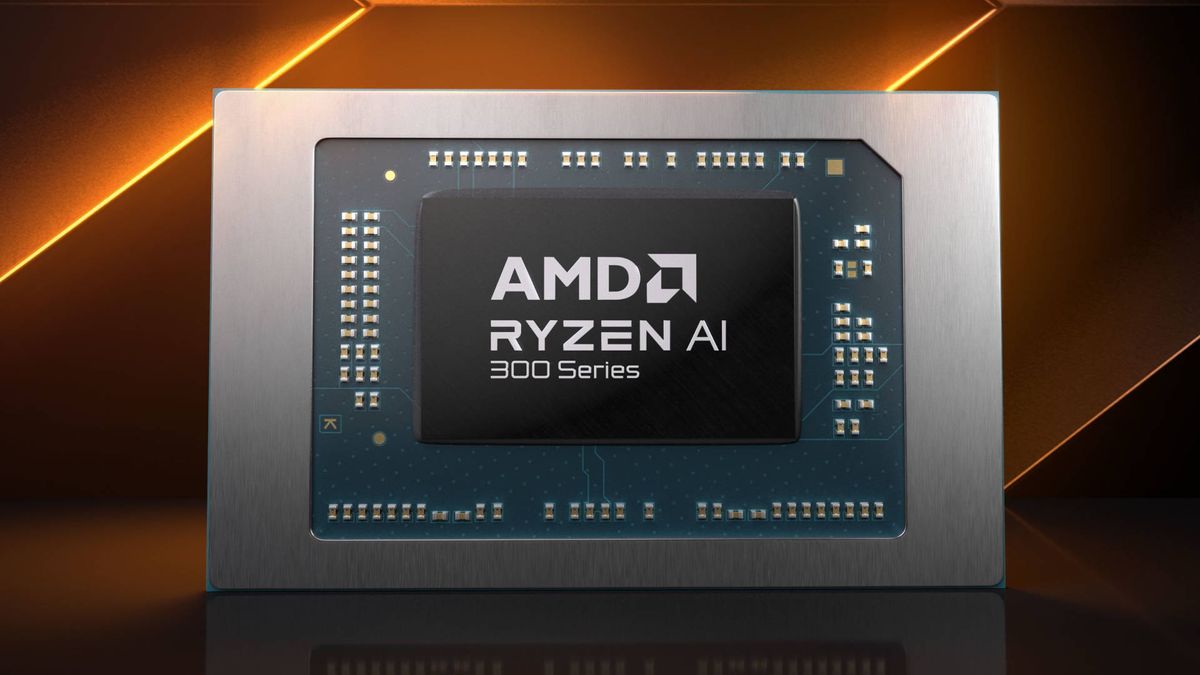Of the two big announcements AMD made today, it could be the new Ryzen AI 300 series APUs that’s most exciting. Not only does it come with the same new Zen 5 CPU cores as the other major newness from AMD, the Ryzen 9000 series desktop CPUs. It’s got a majorly upgraded integrated GPU that should boost performance substantially.
Some key questions immediately follow. Will Ryzen AI 300, formerly known as the Strix Point APU, appear in handhelds? And if it does will it get the top-spec chip and what are the implications for battery life?
The fastest of the new AMD Strix Point APUs at launch is the AMD Ryzen AI 9 HX 370. It ups the graphics compute unit or CU count from 12 in AMD’s previous-gen APUs, such as the Ryzen Z1 Extreme chip found in the OneXPlayer OneXFly, to 16. The new GPU also gets a small clock speed bump from 2.7 GHz to 2.9 GHz.
Those two elements alone would imply a gaming performance bump of about 35%. However, Strix Point’s new iGPU is also upgraded to RDNA 3.5 spec from plain old RDNA.
Despite AMD saying the first devices with Ryzen AI 300 will go on sale in July, very few details on RDNA 3.5 have been released. However, the rumours point to an architecture that’s largely carried over from RDNA 3 save for one key detail. RDNA 3.5 supposedly gets a fairly major upgrade in ray-tracing performance.
| Header Cell – Column 0 | AMD Ryzen AI 9 HX 370 | AMD Ryzen AI 9 365 |
|---|---|---|
| Cores | 4 Zen 5, 8 Zen 5C | 4 Zen 5, 6 Zen 5C |
| Maximum boost clock | 5.1 GHz | 5 GHz |
| Total L2+L3 cache | 36MB | 34MB |
| GPU | Radeon 890M | Radeon 880M |
| GPU spec | 16 RDNA 3.5 CUs | 12 RDNA 3.5 CUs |
| NPU | 50 TOPS | 50 TOPS |
Arguably, ray tracing is RDNA 3’s only obvious weakness in hardware terms, so an APU with an extra 4 CUs plus much-improved ray tracing is pretty appealing. The possible snag is battery life.
AMD didn’t mention battery life at all in its release materials for the new APU. It also didn’t talk about process nodes. Now that AMD has listed the chip on its website, we can see, perhaps unsurprisingly, that Strix Point is built on the TSMC N4 node, which is a refined version of TSMC N5.
In other words, exactly the same silicon as the existing Phoenix and Hawk Point APUs. That’s slightly worrying. As well as the new GPU, Strix Point also has up to 12 new Zen 5 CPUs.
Annoyingly, for now, AMD is restricting the full 16 CU version of the GPU to the top-spec 12-core APU model. Arguably, a handheld gaming device doesn’t need that many CPU cores. And 12 CPU cores plus 16 higher-clocked GPU CUs, all on the same silicon node as the previous APU, sounds awfully power-hungry.
For now, all we know for sure is that the two Strix Point APUs kick off at 15 W TDP whereas the previous-gen APU went down as low as 9W TDP. However, that 9 W spec was for the handheld-specific version of the old APU, the mainstream laptop version had the same 15 W minimum TDP as Strix Point.
Long story short, we just don’t know how Strix Point is going to perform in terms of efficiency. Strictly speaking, we don’t actually know for sure that it’s going into handhelds. Maybe if it is a real power hog, it won’t be suitable.
However, we suspect some version of it will make it into handhelds. At worst, it would make sense to use the 12 CU, 8 core variant and get the benefit of Zen 5 and RDNA 3.5.
There’s also a slight worry over the new APU’s memory bus. It remains a fairly modest 128-bit item shared with the CPU cores. That could be something of a performance bottleneck given the relatively beefy spec of the iGPU.
Whatever, watch this space. We’ll update you as soon as we know more about AMD’s exciting new APU.

